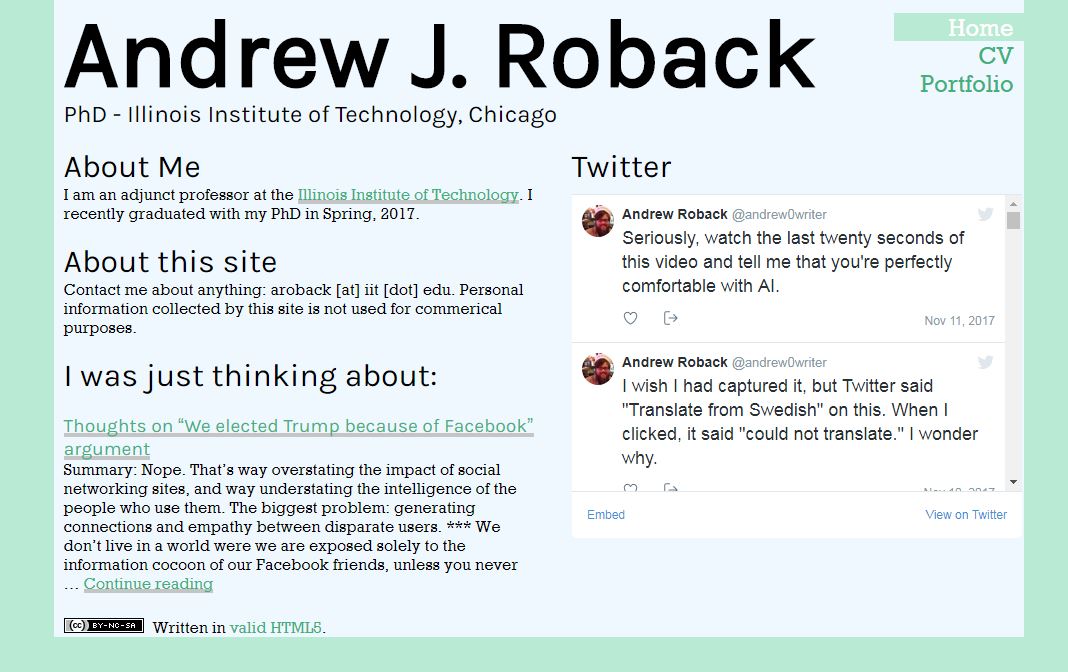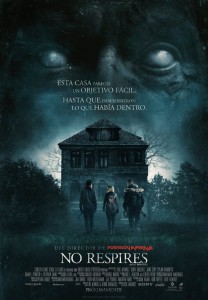I don’t usually clog up my blog with personal anecdotes (I find them tedious to write about), but I have been reading the really excellent blog written by Dmitry Samarov (Hack: Stories from a Chicago cab) and it inspired me to share some recent stories of mine about driving in this city.
I used to bike and take public transit for the most part, but I hurt my right knee bicycling a few years ago and I have never really been able to recover (my cheap-ass student health insurance does not pay to fix things like this). As such, ever since my knee injury a few years ago I have been mostly a driver, sometimes taking public transit. To get to work, I have to take the green line on the CTA, and, due to my late hours, there are a lot of interesting characters (some drunk, some violent) on the trains when I go home. As such, I have pretty much settled into a much loathed routine of driving to work.
This summer, Nicole and I are both teaching six-week summer session courses. She teaches on the far north side, and I teach on the south side. We settled on trying to car pool on days when we teach, even though her class is later than mine so there is a lot of time spent waiting around. The sad fact is that with our Ultralow Emission Vehicle (which is consequently very fuel efficient at around 32 mpg city) it is cheaper to drive than to take any other travel option. Consider the following:
| Nicole Drives and pays to park, I take the CTA |
$7 + $5.00 = $12.00 |
| Nicole and I both take public transit |
$5.00 x 2 = $10.00 |
| I drive Nicole to work, drive to my office, pick her up later and drive home |
(~15 mi. [max] / 32 mpg) x $4.59 (avg. gas price/gal) = $2.15 |
Anyway, now that I’ve justified my laziness and ruining the planet, here are my stories:
***
I almost hit a pedestrian yesterday. I was driving up Loomis from the south side on my way home and I was passing through Pilsen. As I was going north through 22nd street, I saw a girl with a huge fro dart behind a car stopped in the opposite lane of traffic that was waiting for a pedestrian to clear the crosswalk before executing a right-hand turn. Luckily I had my full attention on the intersection (there is a school nearby and there are usually a lot of kids crossing the street) and I caught her out of the corner of my eye as I was in the intersection. I was probably doing about 30 mph (the speed limit) which, given the length of the intersection, gave me about 2-3 second to react. I thought she couldn’t possibly decide to run in front of my vehicle, but she did, and I jammed the breaks, screeching to a halt and narrowly missing her. Judging from her pace she was either late or trying to make a bus. She didn’t even look at my car or seem to notice how close I came to hitting her.
***
I almost ran over someone’s dog today. I was up very late last night and as I was driving home, I missed my alley so I had to circle back around onto a street that is midway between two arterials. Chicago has major arterial streets (with two lanes in each direction) spaced roughly every eight blocks (or about one mile). In between those arterial streets are halfway streets, which are wider and could thus still accommodate a street car (or trolley as some might call it: Chicago once had the largest network in the world).
The street was torn up. I had seen a large number of vehicles yesterday when coming home from work (the street was closed) but I thought it was someone shooting a movie, which seems ridiculous given where I live (East Village). Judging by the strip of pavement ripped up down the middle of the street and filled with quickset, it must have been a water or sewer issue.
I weaved in an out of the massive potholes and construction equipment and pulled in the H-shaped alley from the side street just south of where I missed the first entrance. As I turned the corner of the H, I saw someone’s dog almost run directly into my car. A long-haired man with no shirt on came out and shouted, “I got him, I got him!!” I couldn’t tell if he was mad at me, but he couldn’t have had cause as I was probably going less than 5 mph (the alley hasn’t been paved since I moved in almost 5 years ago, and the hard winters have disintegrated it). After I passed I noticed in the rear-view mirror that he released the collar on his dog and let him run down to the end of the alley where cars regularly gun it.
***
I saw someone being a dick to a bicyclist today. Driving up Sheridan Road towards the far north side I was stopped at a traffic signal in the left-hand lane. The road is two lanes in either direction and it’s an urban feeder that carries traffic flow from Lake Shore Drive, Marine Drive, and Broadway up to Uptown and Edgewater after Lake Shore Drive ends.
In the nearest lane opposite me I saw a bicyclist with his left arm outstretched, properly signaling a left hand turn. This area of Chicago is home to the petite bourgeoisie: a lot of people too old or too poor to live in the Gold Coast or Streeterville. The numerous condominium buildings on the east side of the street have circular driveways (the bicyclist was trying to turn down a street that runs to the lakeshore parks).
When the wealthy retirees want to turn in from the southbound side without any left-turn lane, they back up traffic on Sheridan for miles. The bicyclist happened to be blocking a motorist who wanted to go through the intersection, and in less than half a second after the light turned green (the cyclist had appropriately waited for his traffic signal) the lady in her black Mercedes laid on the horn with a look of utter contempt, probably angry she couldn’t make headway two blocks further south where she would jam up traffic for a mile trying to turn into her luxury condominium circle drive. To his credit, the cyclist was patient and stoically posed with his left arm outstretched.
***
The last vignette seems a bit vitriolic rereading it, but if I haven’t seen the worst driving, I’ve come close.
I worked for two summers as a manager at a state-funded traffic study organization, collecting traffic data in suburban Cook and the collar counties. I alternated between taking the CTA to my loop office and driving 4-6 hours a day visiting field sites, collecting data, and checking up on interns in the field to make sure they weren’t drinking on the job or otherwise endangering their lives or wasting company time.
In that occupation I saw a lot of silly behavior and one death on the road. However, in the past few years driving to and from work in Chicago I have never seen such anger in other drivers to the point where one wonders about the sanity of their fellow motorists. Take this bit of old-man sounding advice from me Chicago motorists:
I’ve seen a lot of accidents and even been in a couple, and I can assure you no one ever thinks that he or she is going to be the cause of a life-ending maneuver on the road. It sadly happens every day. Recognize that you are operating a lethal weapon when you drive, and remain vigilant. Most accidents happen because of the complaisance that we are all guilty of (including me).
Watch for pedestrians and respect their right of way in the crosswalk, no matter what the dick behind you starts honking about. Stay off your mobile phone, especially when making a turn (I almost bought the farm down by Union park four years ago when a motorist executing a left turn nearly hit me while talking on his phone).
Remember that bicyclists have the same right to the road as you, and give them a break as you are driving a half-ton or better machine and a collision with them will most likely be fatal.
No one lives to get out on the road and drive. Everyone just wants to make it home (even people who drive for a living). Pay attention, remain calm, and give the non-drivers a break.






 Dir. Drew Goddard, 95 min., In theaters
Dir. Drew Goddard, 95 min., In theaters